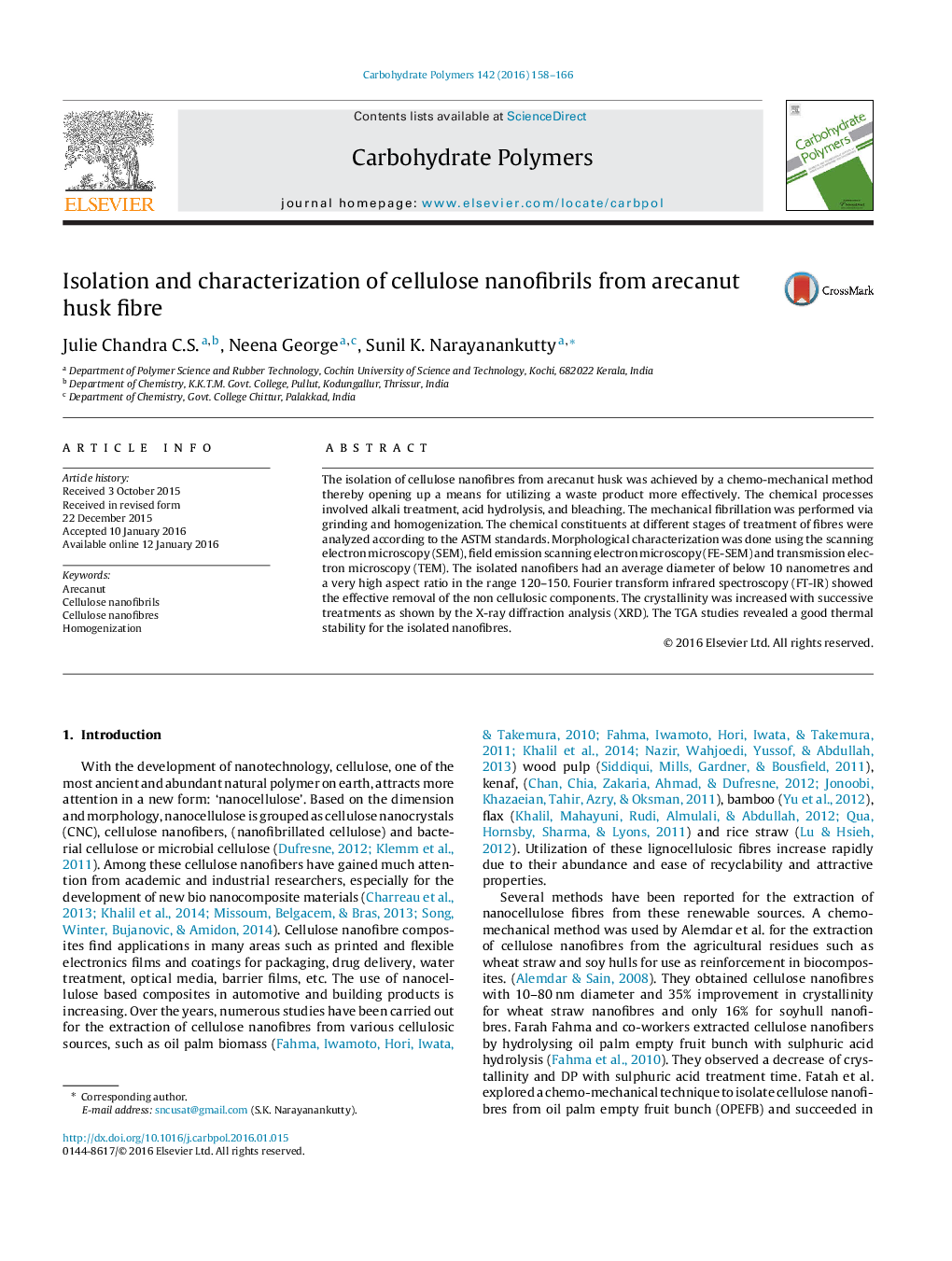| Article ID | Journal | Published Year | Pages | File Type |
|---|---|---|---|---|
| 1383312 | Carbohydrate Polymers | 2016 | 9 Pages |
•Successful isolation of nanocellulose fibres from arecanut husk by a chemo-mechanical method.•The nanocellulose fibrils were of 3–5 nm diameter and high thermal stability.•Nanocellulose fibrils were highly crystalline in nature.•The aspect ratio of nanofibrils is found to be 120–150.•The method opens up a means for effective utilization of waste product-arecanut husk.
The isolation of cellulose nanofibres from arecanut husk was achieved by a chemo-mechanical method thereby opening up a means for utilizing a waste product more effectively. The chemical processes involved alkali treatment, acid hydrolysis, and bleaching. The mechanical fibrillation was performed via grinding and homogenization. The chemical constituents at different stages of treatment of fibres were analyzed according to the ASTM standards. Morphological characterization was done using the scanning electron microscopy (SEM), field emission scanning electron microscopy (FE-SEM) and transmission electron microscopy (TEM). The isolated nanofibers had an average diameter of below 10 nanometres and a very high aspect ratio in the range 120–150. Fourier transform infrared spectroscopy (FT-IR) showed the effective removal of the non cellulosic components. The crystallinity was increased with successive treatments as shown by the X-ray diffraction analysis (XRD). The TGA studies revealed a good thermal stability for the isolated nanofibres.
